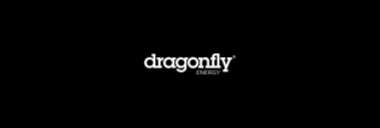REGENXBIO Announces Positive Interim Data from Phase II AAVIATE® Trial of ABBV-RGX-314 for the Treatment of Wet AMD Using Suprachoroidal Delivery
- A single ABBV-RGX-314 gene therapy treatment has the potential to become a new standard-of-care option among anti-VEGF treatments by sustaining vision health long term and overcoming the clinical challenges of managing wet AMD due to the treatment burden of chronic anti-VEGF injections
- ABBV-RGX-314 continues to be well tolerated in over 100 patients from three dose levels with no drug-related serious adverse events
- ABBV-RGX-314 in over 50 patients at third dose level demonstrated highest reduction in treatment burden:
80% reduction in annualized injection rate50% injection-free
- Zero cases of intraocular inflammation observed in patients that received short-course prophylactic topical steroid eye drops
- Conference call Tuesday, January 16 at 4:30 p.m. EST
"The potential of ABBV-RGX-314 to transform the way chronic retinal conditions are treated has been demonstrated in multiple trials using both subretinal and suprachoroidal delivery, and these latest interim results from the AAVIATE trial continue to support this outlook," said Steve Pakola, M.D., Chief Medical Officer of REGENXBIO. "One-time, in-office treatment with ABBV-RGX-314 continues to be well tolerated in patients with wet AMD. We are pleased that dose level 3 in this trial has shown the highest reduction in treatment burden with zero cases of inflammation observed in patients who received prophylactic short-course topical steroids. We are encouraged by this data as part of the global ABBV-RGX-314 program."
"Real world evidence shows that patients with wet AMD are often undertreated due to the unsustainable treatment burden of frequent injections. As a result, many wet AMD patients experience significant vision loss over time," said Dr. Pitcher. "I am encouraged by the safety profile of ABBV-RGX-314 using suprachoroidal delivery and the potential of a one-time, in-office injection that can sustain constant anti-VEGF therapy to address a major unmet need for patients."
Data and Safety Summary
AAVIATE is a Phase II, multi-center, open-label, randomized, active-controlled, dose-escalation trial that is evaluating the efficacy, safety and tolerability of suprachoroidal delivery of ABBV-RGX-314 in patients with wet AMD. The primary endpoint of the trial is mean change in vision in patients dosed with ABBV-RGX-314, as measured by best corrected visual acuity (BCVA) at Week 40 from baseline, compared to patients receiving monthly injections of ranibizumab. Other endpoints include mean change in central retinal thickness (CRT) and number of anti-vascular endothelial growth factor (anti-VEGF) intravitreal injections received following administration of ABBV-RGX-314.
As of November 6, 2023, ABBV-RGX-314 suprachoroidal delivery was well tolerated across 106 patients from three dose levels. No drug-related SAEs were reported. All treatment emergent adverse events (TEAEs) through 6 months in the study eye were mild or moderate and included conjunctival hemorrhage, increased intraocular pressure, episcleritis, and conjunctival hyperemia. Mild intraocular inflammation was reported at similar incidence rate in the first and second dose levels, with mild to moderate intraocular inflammation seen at the third dose level in Cohort 4 and 5. All intraocular inflammation resolved with topical corticosteroids. Notably, there were zero cases of intraocular inflammation in dose level 3, Cohort 6 (n=21), in which patients received a short-course of prophylactic topical steroids following administration of ABBV-RGX-314.
Patients treated with ABBV-RGX-314 continue to demonstrate stable BCVA and CRT at six months. In addition, a meaningful reduction in anti-VEGF treatment burden was observed following administration of ABBV-RGX-314, The highest reduction was seen in dose level 3, demonstrating an
Data presented is available on the "Publications" section of the REGENXBIO website at www.regenxbio.com.
Conference Call
In connection with this announcement, REGENXBIO will host a conference call to discuss the Phase II AAVIATE trial data with Dr. Pitcher and Allen Ho, M.D., FACS, FASRS, Co-Director, Wills Eye Retina Service and Director, Retina Research, on Tuesday, January 16 at 4:30 p.m. EST. Listeners can register for the webcast via this link. Analysts wishing to participate in the question and answer session should use this link. A replay of the webcast will be available via the company's investor website approximately two hours after the call's conclusion. Those who plan on participating are advised to join 15 minutes prior to the start time.
About the AAVIATE® Trial
The multi-center, open-label, randomized, active-controlled, dose-escalation Phase II AAVIATE trial is evaluating the efficacy, safety and tolerability of suprachoroidal delivery of ABBV-RGX-314 in patients with wet AMD using the Clearside SCS Microinjector®. Patients have been dosed across three dose levels: 2.5x1011 (Cohort 1), 5x1011 (Cohorts 2 and 3), and 1x1012 (Cohorts 4-6) genomic copies per eye (GC/eye). Cohort 5 is evaluating ABBV-RGX-314 in 20 patients who are NAb positive. Cohort 6 includes a short course of prophylactic steroids following administration of ABBV-RGX-314.
About ABBV-RGX-314
ABBV-RGX-314, being developed in collaboration with AbbVie, is being investigated as a potential one-time treatment for wet AMD, diabetic retinopathy, and other chronic retinal conditions. ABBV-RGX-314 consists of the NAV® AAV8 vector, which encodes an antibody fragment designed to inhibit vascular endothelial growth factor (VEGF). ABBV-RGX-314 is believed to inhibit the VEGF pathway by which new, leaky blood vessels grow and contribute to the accumulation of fluid in the retina.
REGENXBIO is advancing research in two separate routes of administration of ABBV-RGX-314 to the eye, through a standardized subretinal delivery procedure as well as delivery to the suprachoroidal space. REGENXBIO has licensed certain exclusive rights to the SCS Microinjector® from Clearside Biomedical, Inc. to deliver gene therapy treatments to the suprachoroidal space of the eye.
About Wet AMD
Wet AMD is characterized by loss of vision due to new, leaky blood vessel formation in the retina. Wet AMD is a significant cause of vision loss in
About REGENXBIO Inc.
REGENXBIO is a leading clinical-stage biotechnology company seeking to improve lives through the curative potential of gene therapy. REGENXBIO's NAV Technology Platform, a proprietary adeno-associated virus (AAV) gene delivery platform, consists of exclusive rights to more than 100 novel AAV vectors, including AAV7, AAV8 and AAV9. REGENXBIO and its third-party NAV Technology Platform Licensees are applying the NAV Technology Platform in the development of a broad pipeline of candidates, including late-stage and commercial programs, in multiple therapeutic areas. REGENXBIO is committed to a "5x'25" strategy to progress five AAV Therapeutics from our internal pipeline and licensed programs into pivotal-stage or commercial products by 2025.
Forward-Looking Statements
This press release includes "forward-looking statements," within the meaning of Section 27A of the Securities Act of 1933, as amended, and Section 21E of the Securities Exchange Act of 1934, as amended. These statements express a belief, expectation or intention and are generally accompanied by words that convey projected future events or outcomes such as "believe," "may," "will," "estimate," "continue," "anticipate," "assume," "design," "intend," "expect," "could," "plan," "potential," "predict," "seek," "should," "would" or by variations of such words or by similar expressions. The forward-looking statements include statements relating to, among other things, REGENXBIO's future operations and clinical trials. REGENXBIO has based these forward-looking statements on its current expectations and assumptions and analyses made by REGENXBIO in light of its experience and its perception of historical trends, current conditions and expected future developments, as well as other factors REGENXBIO believes are appropriate under the circumstances. However, whether actual results and developments will conform with REGENXBIO's expectations and predictions is subject to a number of risks and uncertainties, including the timing of enrollment, commencement and completion and the success of clinical trials conducted by REGENXBIO, its licensees and its partners, the timing of commencement and completion and the success of preclinical studies conducted by REGENXBIO and its development partners, the timely development and launch of new products, the ability to obtain and maintain regulatory approval of product candidates, the ability to obtain and maintain intellectual property protection for product candidates and technology, trends and challenges in the business and markets in which REGENXBIO operates, the size and growth of potential markets for product candidates and the ability to serve those markets, the rate and degree of acceptance of product candidates, and other factors, many of which are beyond the control of REGENXBIO. Refer to the "Risk Factors" and "Management's Discussion and Analysis of Financial Condition and Results of Operations" sections of REGENXBIO's Annual Report on Form 10-K for the year ended December 31, 2022, and comparable "risk factors" sections of REGENXBIO's Quarterly Reports on Form 10-Q and other filings, which have been filed with the
SCS Microinjector® is a trademark of Clearside Biomedical, Inc. All other trademarks referenced herein are registered trademarks of REGENXBIO.
Contacts:
Dana Cormack
Corporate Communications
dcormack@regenxbio.com
Investors:
Chris Brinzey
ICR Westwicke
339-970-2843
chris.brinzey@westwicke.com
![]() View original content to download multimedia:https://www.prnewswire.com/news-releases/regenxbio-announces-positive-interim-data-from-phase-ii-aaviate-trial-of-abbv-rgx-314-for-the-treatment-of-wet-amd-using-suprachoroidal-delivery-302036184.html
View original content to download multimedia:https://www.prnewswire.com/news-releases/regenxbio-announces-positive-interim-data-from-phase-ii-aaviate-trial-of-abbv-rgx-314-for-the-treatment-of-wet-amd-using-suprachoroidal-delivery-302036184.html
SOURCE REGENXBIO Inc.










